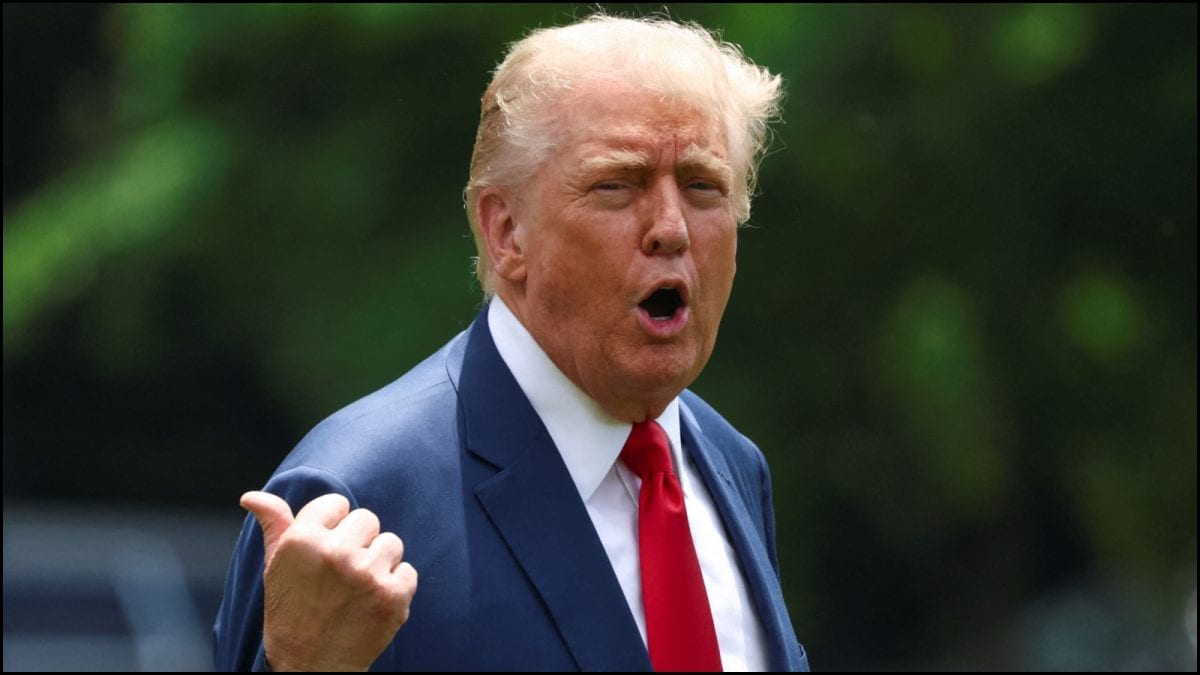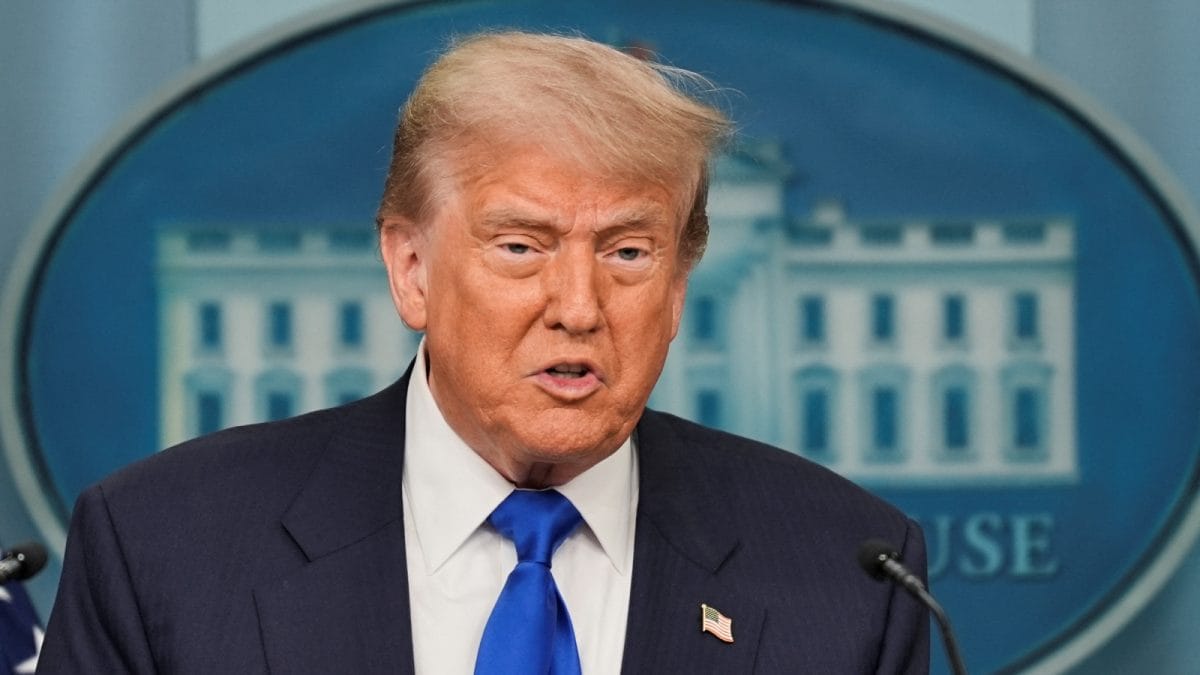ARTICLE AD BOX
The Seine, which flows through the heart of Paris, was sick for 100 years. For the first time since 1923, people were allowed to swim in the Seine. This is after an extensive clean-up of the river. The Yamuna is similarly polluted in Delhi. With Delhi CM Rekha Gupta intensifying the push, will Delhiites get to swim in the Yamuna anytime soon?
From lovers' whispers to tearful adieus, the Seine in Paris saw it all, even as it flowed lifeless for a hundred years. Dismissed as too poisonous to swim in, and too polluted even to touch, the Seine, which once had a "poop problem", woke to new life after a century. It welcomed swimmers with open arms last weekend, a year after athletes from the world swam in it during the 2024 Summer Olympics. The Seine's revival has a message for Indians. And it holds up a mirror to New Delhi and its own polluted and dying river, the Yamuna. Will Delhiites ever get to swim in the Yamuna like the Parisians are doing?
If Paris could revive the Seine, and Beijing could clear its skies with bold moves, what is stopping Delhi from reclaiming the sacred Yamuna – the very river that gave the national capital its identity and existence?
Delhi can't afford to lose the river on whose banks the journey of Indraprastha was believed to have begun 3,000 years ago. And the truth is, it doesn't need a miracle. Just three things: Treat every drop. Enforce the rules. And, sustain the flow.
PARIS' SEINE WELCOMES SWIMMERS AFTER A CENTURY AFTER 1.4-BILLION EURO CLEAN-UP
The transformation of the Seine, which was plagued by untreated sewage, has now emerged as a victory of persistent efforts and pinpointed investment of time and resources.
For decades, untreated sewage and industrial waste rendered the river toxic, leading to a swimming ban in 1923.
Paris's clean-up began in earnest in the 1990s, with a 1.4 billion investment in sewage treatment plants, stricter industrial regulations, and real-time water quality monitoring. That's roughly Rs 1,405 crore in Indian currency.
By 2024, ahead of the Paris Olympics, Paris intensified efforts. It deployed advanced filtration systems and built green infrastructure like wetlands and filtered pollutants along the river's course. The result?
Last weekend, Parisians swam in the Seine for the first time in 100 years.
Paris Deputy Mayor Pierre Rabadan said water from the Seine was tested daily to confirm its safety.
Although French environmental authorities confirmed that bacteria levels in the Seine were well below official thresholds for safe swimming, a BBC report noted that some bacteria, including E coli, persisted due to rainfall.
But still, the Seine's successful revival highlights the possibility of restoring polluted rivers. It is a challenging yet hopeful reminder for Delhi in its struggle to clean the Yamuna.
Paris Mayor Anne Hidalgo, who promised the Seine would be clean, took a dip in it in 2024 to prove that the promise had been fulfilled.
Meanwhile, in Delhi, the challenge of taking a dip in the Yamuna turned into a political dare.
In October 2024, Delhi BJP chief Virendra Sachdeva landed in hospital with itching and breathing trouble, just two days after he took a dip in the filth-laden Yamuna to call out the Aam Aadmi Party (AAP) government's failure to clean it.
YAMUNA: CHOKED, DEAD, AND FORGOTTEN
The Yamuna, which for centuries served as Delhi's lifeline, is now so far from swimmable. Even a dip in the Yamuna could be dangerous.
BJP's Sachdeva experienced it first-hand.
Even the vegetation along the Yamuna River's floodplains in Delhi and the underlying groundwater are turning toxic due to the river's severe pollution, with heavy metals and contaminants from untreated sewage and industrial effluents seeping into the soil and water table. That's a recipe for both agriculture and public health disasters.
Flowing 22-kilometres through New Delhi, the Yamua's stretch in the national capital accounts for over 80% of the river's pollution despite being just 2% of its length, says the Centre for Science and Environment (CSE), a New Delhi-based research and advocacy organisation.
The river's biochemical oxygen demand (BOD) is 70 mg/l, far exceeding the safe limit of 3 mg/l, according to a January 2025 Delhi Pollution Control Committee report. A higher BOD indicates higher levels of pollution by microorganisms, which consume more oxygen, denying it to aquatic species.
Faecal coliform levels in March reached 84,00,000 MPN/100 ml, against a desirable 500, and the fundamental parameter of dissolved oxygen is virtually zero, rendering the river biologically dead.
Yamuna's dire condition mostly made it to the front-pages during Chhath Puja, with photos of devotees performing rituals in layers of toxic foam cover. Political attention has, predictably, followed the ritual.
Past promises abound. In 2015, the AAP government of former CM Arvind Kejriwal vowed to clean the Yamuna by 2020, a deadline later pushed to 2025. Kejriwal had claimed he'd swim in the Yamuna to prove its cleanliness. The promise remained unfulfilled.
As a result, the AAP, which had won 13 out of 15 Yamuna-belt seats in 2020, lost power this time, with the BJP flipping 9 seats in its favour.
The AAP attributed the Yamuna's pollution to upstream contamination from Haryana, claiming that industrial effluents and untreated sewage released at Haryana's Hathnikund Barrage degraded water quality before it reached Delhi. Kejriwal alleged that Haryana's BJP government "poisoned the water".
The party also stated that its limited control over interstate water-sharing and inadequate freshwater flow from upstream states hinder its efforts to dilute pollutants and clean the river effectively.
The BJP, now in power in Delhi, has long accused the AAP of inaction, while the Kejriwal-led party countered by saying upstream pollution from the BJP-ruled Haryana has poisoned the river. This blame-game stalled progress, leaving the Yamuna pitch black from Wazirabad to Badarpur in Delhi.
DELHI CM REKHA GUPTA AIMS TO CLEAN YAMUNA IN 3 YEARS
The BJP, which unseated the AAP government on the back of promises, including the rejuvenation of Yamuna, had pledged to "ensure that all sewage treatment plants discharging into Yamuna release only properly treated water".
CM Gupta performed aarti at Kashmere Gate's Vasudev Ghat after taking oath as the CM.
Now, Delhi's BJP government, led by Rekha Gupta, has asserted that Yamuna's revival is a priority.
Gupta has now set a three-year target to clean the Yamuna, declaring that the next India Today Conclave would be held on a ship sailing the Yamuna. The mission had already begun, she said in March at the Conclave.
In its 2025-26 budget, the Delhi government allocated Rs 1,500 crore specifically for cleaning the Yamuna.
This includes Rs 500 crore for building 40 decentralised sewage treatment plants (STPs), Rs 500 crore for upgrading existing STPs, Rs 250 crore to replace ageing sewer lines, and Rs 250 crore for tapping major drains like the Najafgarh drain. Additionally, Rs 40 crore has been earmarked for cleaning equipment such as trash skimmers and weed harvesters, Rs 20 crore for super-sucker machines, and Rs 10 crore for revamping the Wazirabad sewer.
Last week, the Delhi Government unveiled an ambitious 43-point action plan aimed at rejuvenating the Yamuna River over the next two years. This roadmap built upon its earlier 30-point strategy, reported The Indian Express.
From February 2025, a four-pronged strategy – debris removal, sewage treatment upgrades, inter-agency coordination, and stricter regulations – has been rolled out. The enforcement of which has attracted backlash from the AAP.
But cleaning the Yamuna, a river described by a parliamentary panel as "virtually non-existent" in Delhi, remains a challenging task, say experts.
YAMUNA CANNOT BE REVIVED IN 3 YEARS; BUT PROCESS MUST START NOW
Of the 37 sewage treatment plants (STPs) in Delhi, only 16 meet the discharge norms, noted a September 2024 report by the Delhi Pollution Control Committee.
In an opinion piece in the Deccan Herald, Shailendra Yashwant, an adviser to the Colombo-based climate NGO consortium Climate Action Network South Asia, argued, "It is not possible to clean up the Yamuna in three years".
He argued that cleaning the Yamuna was impossible as long as the focus remained on surface-level beautification and end-stage clean-up, rather than tackling the root causes of pollution: untreated sewage, industrial effluents, dying e-flows, encroachments, and the institutional decay of pollution control boards.
"You can pour thousands of tonnes of cement to beautify its riverfront. You can build biodiversity parks and paint the ghats. You can pitch hundreds of miles of barbed wire fences to restrict access to the river. You can call the Yamuna holy and a lifeline, but as long as the focus remains on cleaning the river and not stopping the pollution, it is not possible to clean up the Yamuna," Yashwant concluded.
Achieving bathing-quality water in the Yamuna is ambitious, but it is possible through a coordinated, multipronged effort, according to experts.
According to leading environmental expert CR Babu, all wastewater flowing into the Yamuna must be treated to meet high-quality standards. He noted the lack of adequate water flow in the Yamuna, particularly downstream of the northern Wazirabad Barrage, as a critical barrier.
"Delhi does not have enough water downstream of the Wazirabad Barrage to maintain the environmental flow in the river. The solution is to treat all the wastewater to new standards (BOD and TSS less than 10 mg per litre) and clean it further using in-situ bioremediation techniques like constructed wetland systems to achieve a BOD level of 3 milligrams per litre and dissolved oxygen greater than 5 milligrams per litre," leading botanist Babu told news agency PTI in 2022.
Over 800 million litres of untreated sewage enters the Yamuna daily, and only 32% of Delhi's 28 industrial clusters are connected to common effluent treatment plants, according to the New Delhi-based think-tank Council on Energy, Environment and Water.
Restoring the Yamuna so it can one day imitate, and perhaps even boast of its revival like the Seine, won't come from riverfront beautification alone, nor from ritual clean-up drives ahead of festivals.
While the BJP government's focus on the Yamuna offers a glimmer of hope, the crisis of the river, revered as a God, now demands more than symbolic gestures and budget allocations.
If London could reclaim the Thames, Seoul could restore the Cheonggyecheon Stream, Paris could revive the Seine, and Beijing could clean its air, then Delhi surely can dare to dream the same for the Yamuna, and also better its air quality.
- Ends
Published By:
Sushim Mukul
Published On:
Jul 8, 2025



.png)
.png)
.png)
















 10 hours ago
3
10 hours ago
3









 English (US) ·
English (US) ·